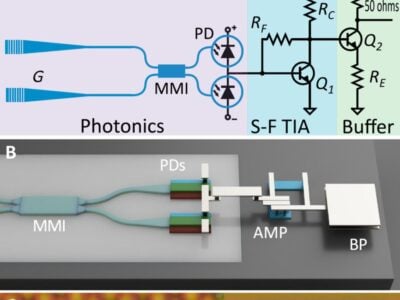
Ford tests geofencing to enforce speed limits
Speed-limited zones – usually 30 km/h in continental Europe – are considered one of the most important measures to reduce the risk of accidents in urban areas, especially for pedestrians and cyclists. Ford is therefore currently testing connected vehicles with geofencing technology in Cologne. In addition to greater safety for road users, this method of digitally determining a vehicle’s location has another potential advantage: it could one day make many traffic signs superfluous.
Ford’s Geofencing Speed Limit Control system could not only make roads safer in the future, but also help drivers avoid potential fines for accidental speeding, the automaker advertises.
Geofencing refers to the automated triggering of an action by exceeding a geo-located limit. In most cases, this is a geographically definable, closed area, so that a distinction can be made between “inside the area” and “outside the area.” This means that a driver notification can be triggered when entering the boundary – for example, when entering a 30 km/h zone – or when exiting this boundary. The vehicle must be networked for this purpose, i.e., it must send its exact position at regular intervals or allow its position to be queried from outside. This location determination can be carried out via the mobile communications system at radio cell level or coordinate-related via GPS.
“Geofencing technology has proven potential to make everyday driving easier and safer – to the benefit of everyone, not just the person behind the wheel,” said Michael Huynh, Manager, City Engagement Germany, Ford of Europe. “Incorporating geofencing can ensure that the speed driven is reduced exactly where it needs to be to improve the safety of all road users. Moreover, emissions and noise can be reduced.”
- BMW introduces “ecological geofencing” for hybrid vehicles
- Ford develops technology to predict potential accidents
Ford already uses geofencing technology in its Transit Custom plug-in hybrid electric drive (PHEV) light commercial vehicles to ensure that this light commercial vehicle automatically switches to zero-emission electric drive mode when entering an environmental zone.
Two all-electric Ford E-Transits, which have been equipped with the necessary geofencing technology for the practical test, are being used as part of a 12-month test in the Cologne urban area. The test area includes all 30 km/h zones in the city center as well as selected zones in other parts of the city. Among other things, the effects of speed limits on traffic flow and on reducing the risk of accidents are being analysed.
The driver receives geofencing information via the instrument panel of his vehicle, with the respective specified speed limit displayed below the real speedometer speed. If the driver is traveling faster than permitted in a geofencing zone, the vehicle automatically reduces speed. However, the driver can deactivate the system at any time. In the future, Ford’s geofencing speed control system could also allow drivers to set particularly low speeds of just 20 km/h, for example for driving on company premises specially marked by geofencing. In addition, speed-reduced areas could also be defined flexibly, for example to take account of temporary road works or the time of day.
The practical test in Cologne will run until March 2023 and is a collaboration between Ford’s City Engagement team, the cities of Cologne and Aachen, and Ford software engineers in Palo Alto, California/USA. The Cologne test is part of broader Ford research initiatives in Germany, France, the United Kingdom, Italy, the Netherlands and Norway.
The Cologne pilot builds on other current Ford research projects that are also designed to improve road safety. These include networked traffic light technologies that automatically switch to green in inner cities as soon as ambulances, fire departments and police vehicles on blue-light duty approach them and need to move forward as quickly and safely as possible. Ford is also researching methods for audibly warning drivers – alerting them to the direction from which other vehicles and/or other road users are approaching.
Geofencing could also provide a safety benefit in another way: The technology could help ensure that drivers are no longer distracted by the growing forest of roadside signs. In this context, Ford points to current developments in Great Britain: There, the number of road signs has doubled in the past two decades to around 4.6 million. In view of this sign jungle, the British Ministry of Transport is now calling on local authorities to remove unnecessary signs that have become illegible. With these facts in mind, reducing the number of signs on the roads could also make a significant contribution to greater safety in towns and villages, the automaker touts. Drivers would then be better able to focus on the actual traffic situation.
Related articles:
BMW introduces “ecological geofencing” for hybrid vehicles
Precision positioning should improve e-scooter acceptance
GPS automatically switches hybrid vehicle to electric operation
AI-based occupancy detection solution addresses smart home geofencing
NXP, Ford collaborate on next-gen connected car
Ford develops technology to predict potential accidents
 If you enjoyed this article, you will like the following ones: don't miss them by subscribing to :
eeNews on Google News
If you enjoyed this article, you will like the following ones: don't miss them by subscribing to :
eeNews on Google News




